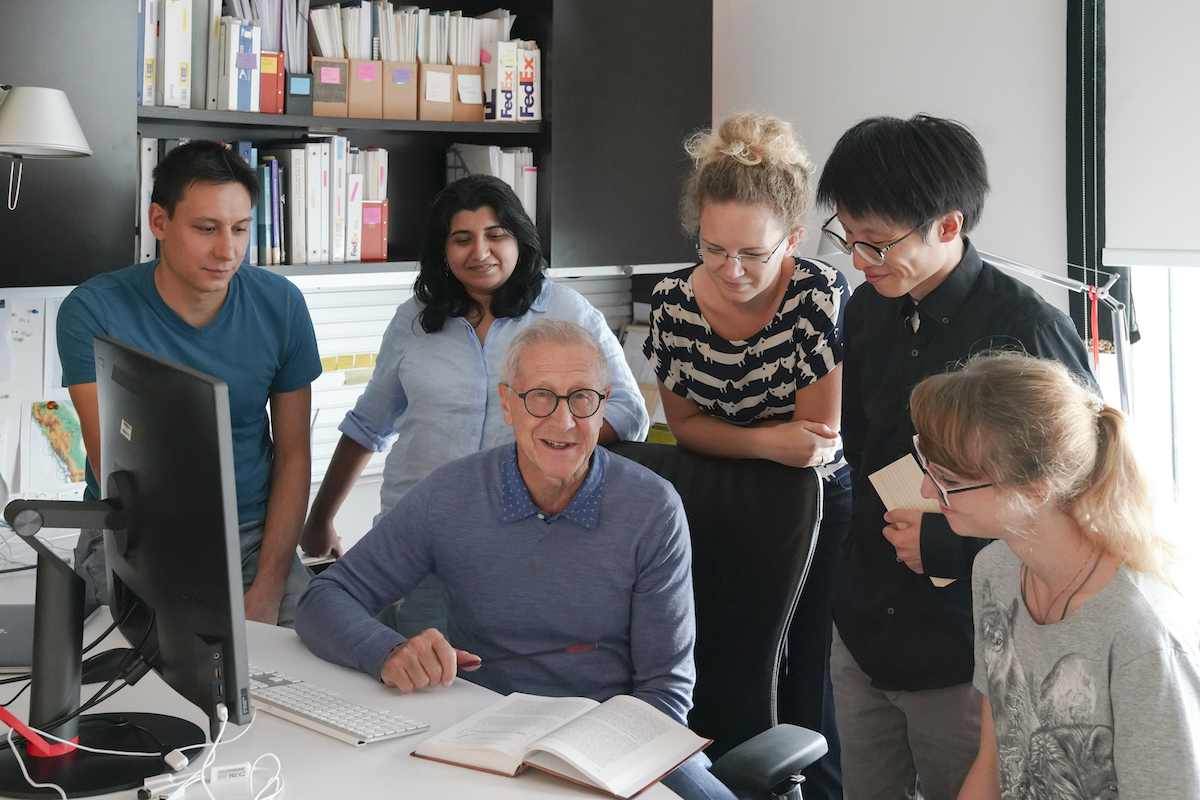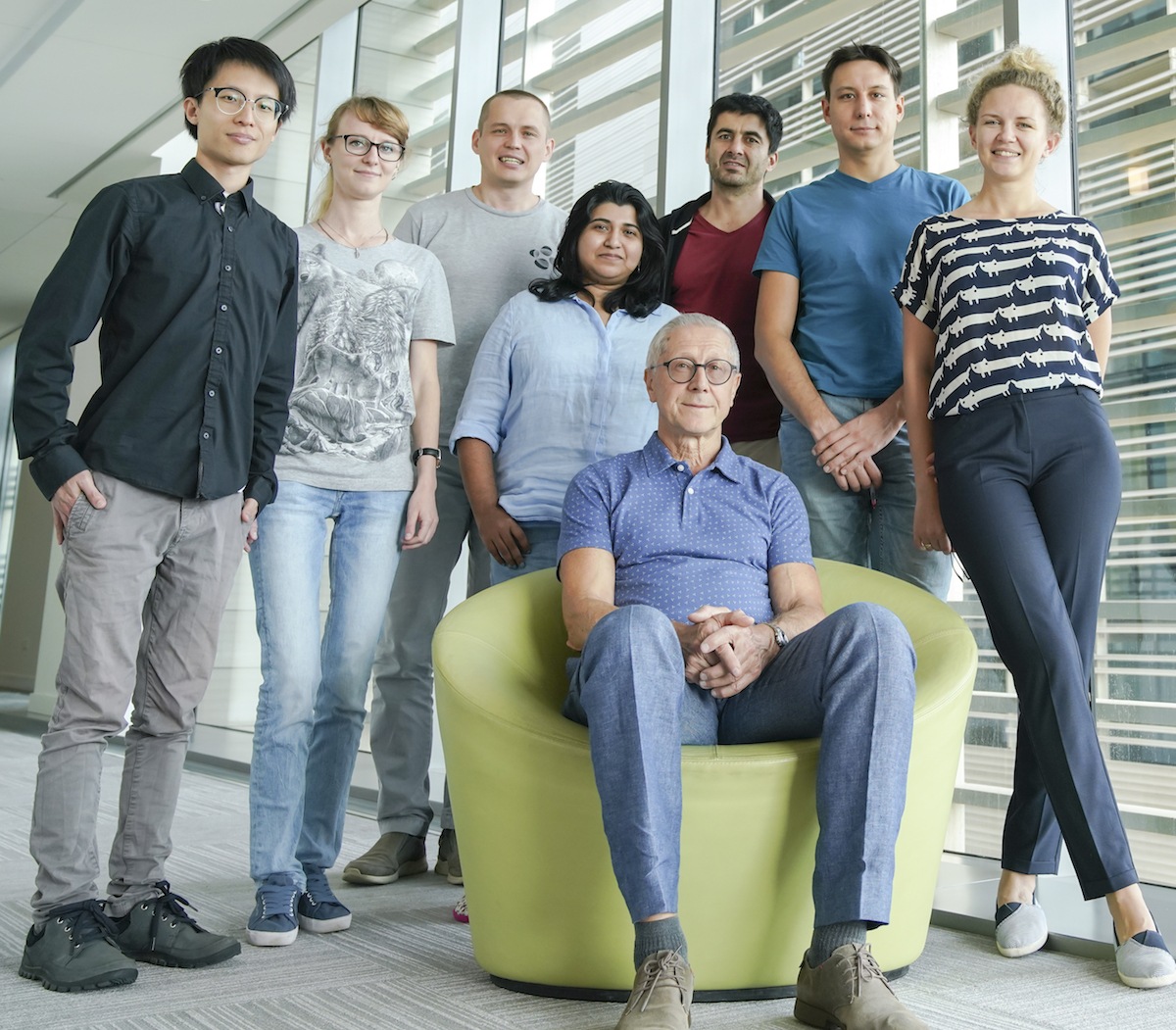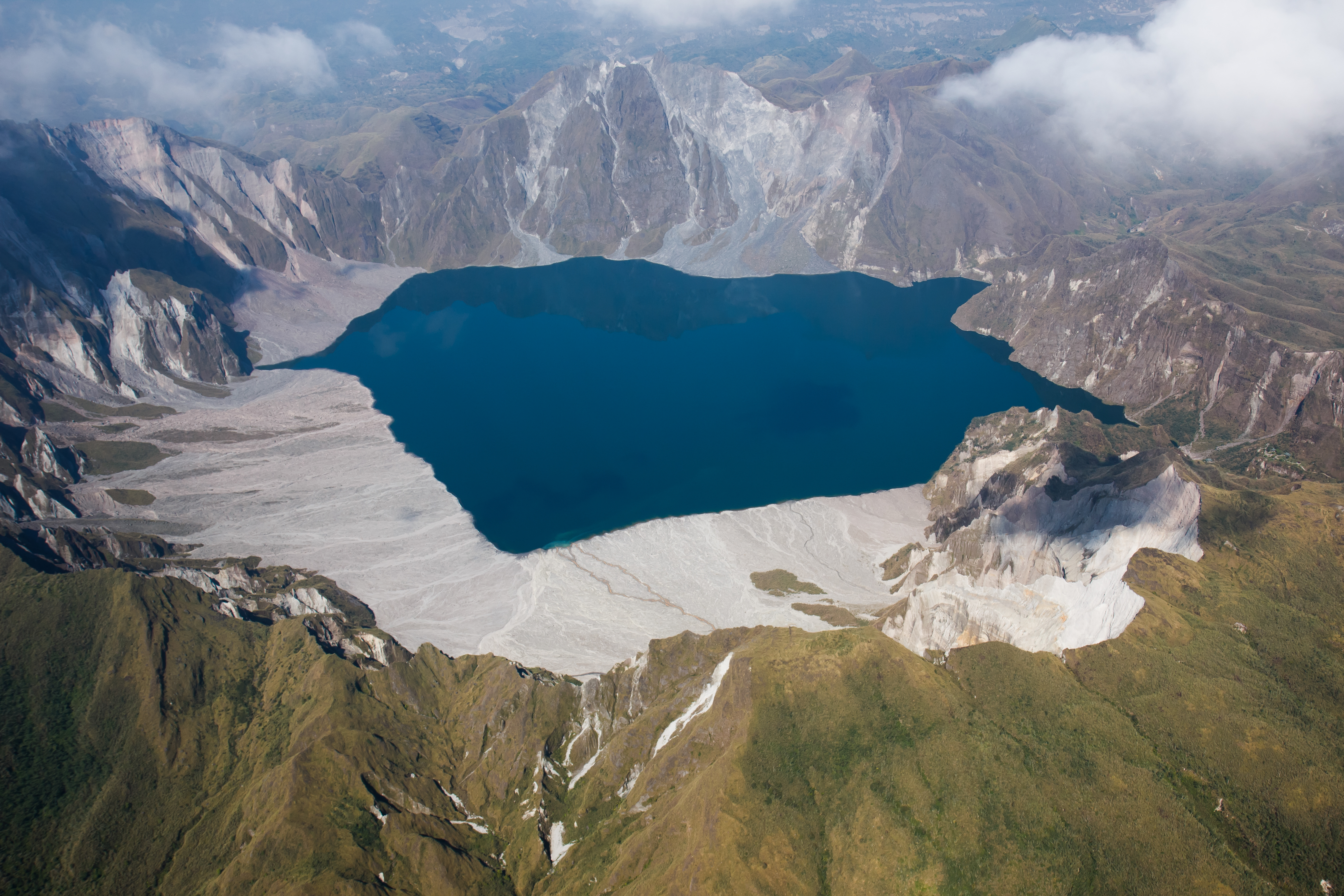Dusting predictive climate models to perfection

Georgiy Stenchikov (center), KAUST professor of Earth science and engineering, and his Atmospheric and Climate Modeling research group use global and regional climate models to predict and explain atmospheric and oceanic processes. Photo by Andrea Bachofen-Echt.
-By Sonia Turosienski, KAUST News
Heat waves, rain spells, dust clouds—prediction of regional climate change in the Middle East is an open scientific question. Georgiy Stenchikov, KAUST professor of Earth science and engineering and principal investigator of the University's Atmospheric and Climate Modeling research group, uses a combination of global and regional climate models to predict and explain local atmospheric and oceanic processes and their environmental impacts.
Stenchikov explained that global and regional processes are interconnected. This means that in order to get a reliable regional prediction, one has to make an accurate global one. Therefore, the research group first develops a global climate forecast with an exceptional special resolution of 25 kilometers and then downscales it to kilometer resolution in order to study specific local phenomena such as dust storms and flash floods.
Keeping tabs on dust
Dust is part of living in a desert region. Dust affects not only air quality but also solar and terrestrial radiation and therefore climate. Until the Atmospheric and Climate Modeling group's work began, however, dust was not readily accounted for in the regional climate simulations, and coupled ocean-atmosphere regional models were rare.
"We were the first group to develop coupled regional atmospheric and oceanic models for the Red Sea, and we are unique [because] we account for the climate effect of aerosols [and] especially dust in this region. The Middle East is notorious for high dust pollution, so accounting for the dust effect is especially important for this region," said Stenchikov.
The group found that dust strongly affects the Red Sea, with the summer months featuring more dust over the water than on land. The southern part of the Red Sea is particularly prone due to the combination of prevailing winds pushing dust south and high coastal mountains trapping it over the water.
"The trapped dust creates high optical depth and, as such, an unusually high solar cooling effect of 60 W/m2 at the sea surface. When the sea cools, it evaporates less, affecting energy balance and changing circulation," Stenchikov continued.

KAUST Professor Georgiy Stenchikov is pictured here on campus with members of his Atmospheric and Climate Modeling research group. Photo by Andrea Bachofen-Echt.
"We've been observing aerosol characteristics for seven years and [we] publish data on the NASA Goddard Space Flight Center's website. Dust differs based on location, so it is important to analyze the particles' chemical composition, size distribution and their deposition rates as well. It's important to have this information to improve our models—especially for applications in predicting solar energy yield," he explained.
Predicting regional climate change
The majority of scientists predict that without drastic action, the globally averaged temperature will rise up to 1.5 K by the middle of this century. Predicting what will happen at a regional level, however, is less straightforward. Stenchikov explained that local changes in circulation complicate the forecast. The Middle East region has high natural climate variability, making it especially complex.
"There will be forced climate change locally as predicted, but there are natural variations [that] have a periodic character that overlap—periods of cooling and periods of warming," he stated.
To better understand and predict these periodic changes, researchers like Stenchikov need their models to match natural effects as closely as possible. One area that Stenchikov focuses on is the effect of volcanic eruptions on the regional climate.
"The last eruption that affected the Middle East strongly was the Mount Pinatubo eruption in the Philippines in 1991," he said. "It was a record cold winter in the Middle East, so that snow appeared in areas not usually prone to snowfall and corals in the Red Sea remained bleached for two years."
The eruption injected a huge amount of materials and particularly SO2 into the lower stratosphere at a height of 25 kilometers, where SO2 oxidized and mixed with water to create submicron droplets of sulfate aerosol; these spread globally and stayed in the stratosphere for at least two years. The aerosol plume reflected solar radiation and cooled the planet.

The 1991 eruption of Mount Pinatubo (pictured here) in the Philippines had a strong impact on the regional climate in the Middle East. Image courtesy of Shutterstock.

KAUST Professor Georgiy Stenchikov's Atmospheric and Climate Modeling group works to improve atmospheric and oceanic models by correctly accounting for the effect of aerosols like dust. Stenchikov (center) is pictured here working with two of his group's members. Photo by Andrea Bachofen-Echt.
"We're using volcanic impacts as natural experiments to test and to increase the predictive strength of our models," Stenchikov concluded.
Stenchikov co-authored the section on how eruptions affect the climate in the Nobel Prize-winning IPCC AR4 report. He is currently writing an update on this work for the American Meteorological Society.
Related stories:
- The AQABA project: Measuring air quality by sea
- Balloon-borne surveys of the atmosphere
- Up in the air over Arabia
-
Effect of dust on the Red Sea

